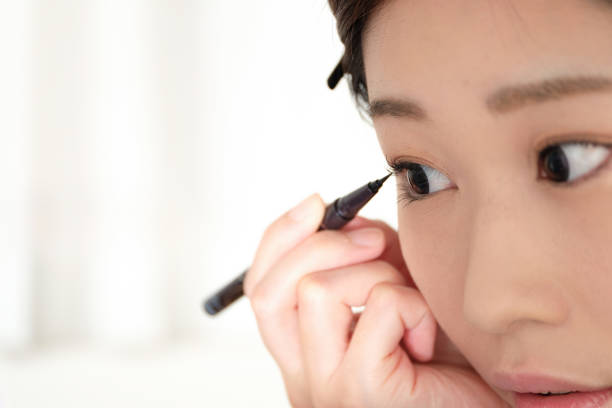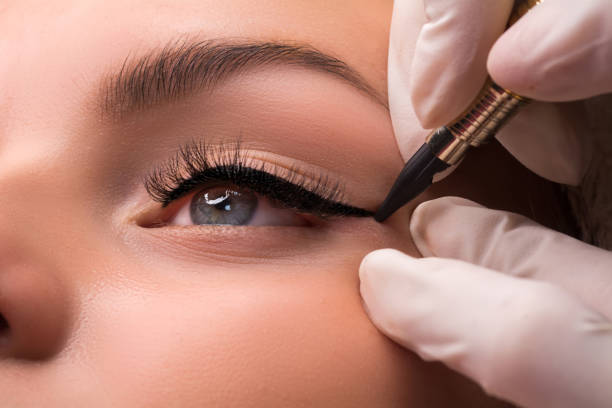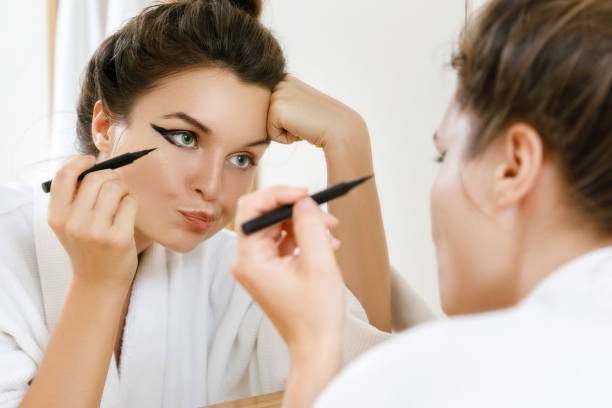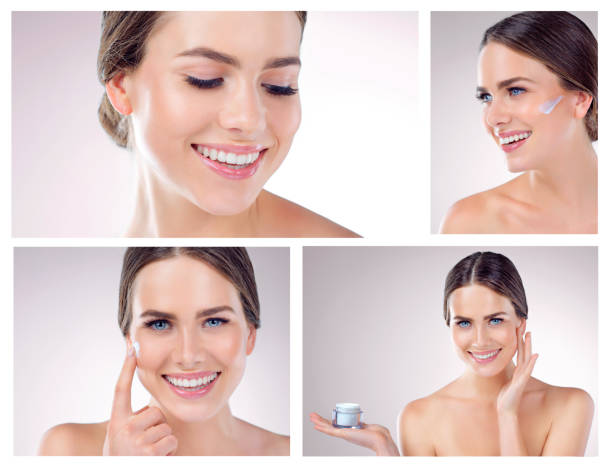
How to get eyeliner to stay on the waterline
If you’ve ever meticulously painted your waterline with eyeliner, only to find it smeared or vanished completely shortly after, you’re not alone. This article revolves around resolving that very issue—ensuring your eyeliner stays put on the waterline. To keep your look sharp and intact, we’re delving into the best practices and products for a lasting impression, highlighting waterproof liquid eyeliners, pencil liners, and gel eyeliners designed specifically for this delicate area.
Waterline eyeliner is a game-changer in transforming the eyes, giving an appearance of fuller lashes and a more defined eye shape. However, the challenge lies in selecting eyeliners that promise durability and safety, especially suited for the sensitive waterline area. The keys to success are choosing the right product and mastering the application technique to ensure that the worn eyeliner does not easily wear away.
Prepping Your Eyes for Optimal Adherence
Before we dive into techniques and products, it’s essential to understand the groundwork for any lasting makeup application, starting with a clean base. Cleansing the eye area removes natural oils and residue that could prevent your eyeliner from adhering properly. This first step is crucial to create a receptive canvas for your product.
- Use a gentle, oil-free cleanser suitable for the eyes.
- Ensure the waterline is pat dry to avoid diluting the liner.
Eye primers are not always thought of when it comes to lining the waterline, but they could also play a supporting role in prolonging the liner’s wear. These primers can create a slightly tacky base, helping the product to stay in place for longer periods.
Protecting the eye’s sensitive skin is paramount, and gentle products should be your go-to. Applying harsh substances can lead to irritation, which increases the likelihood of your eyes watering and, consequently, the eyeliner running. Techniques such as using minimal pressure and avoiding touching the eye directly can minimize this risk.
- Select a primer designed for sensitive eyes.
- Apply sparingly to avoid buildup which could affect liner application.

Selecting the Right Eyeliner for the Waterline
As we move on to the types of eyeliners suited for the waterline, let’s draw a distinction between waterproof and water-resistant options. Waterproof eyeliners are formulated to resist moisture completely, ideal for areas exposed to tears like waterlines. In contrast, water-resistant liners provide a degree of protection against moisture but might not hold up as firmly against the teary waterline environment.
Waterproof liquid liners are a popular choice for the waterline because of their high staying power. However, liquid formulations could also be too harsh if they contain certain ingredients, so it’s vital to carry out a patch test before committing to putting liquid liners on the sensitive waterline.
Gel eyeliners garner praise for their creamy texture and the ease with which they glide onto the upper waterlines. Their malleable consistency allows for a smooth application that minimizes tugging, reducing the chance for irritation. Pencil liners, while offering less precision, are often preferred for the lower waterlines due to their softer application.
| Ingredient | Benefits for Waterline | Common in Product Type |
|---|---|---|
| Silicones | Provide a smooth glide | Pencil and Gel liners |
| Wax | Create a water-resistant barrier | Gel and Pencil liners |
| Pigments | Offer deep, vivid color | Liquid liners |
Evaluating ingredient lists is part of choosing the right product. Ingredients like silicones and wax-based components help in crafting an eyeliner that not only stays put but is also gentle enough for the waterline. Hypo-allergenic and ophthalmologist-tested products are generally recommended.
The Application Process: Tips and Techniques
Now that we have our product selection narrowed down, it’s time to move on to the actual application process. The goal here is not just to get the eyeliner onto the waterline, but to do so in a way that stays put for the longest time possible.
The step-by-step guide to waterline application begins with getting into a comfortable position. A steady hand is crucial, so resting your elbow on a flat surface and tilting your chin up can provide stability when drawing the line. If you’re using a pencil liner, make sure it’s sharp enough to provide a clean line but not so sharp that it could irritate the eye.
- Start at the outer corner of the eye and gently pull your eyelid taut.
- With your eyeliner of choice, begin applying from the outer corner inwards.
- Use short strokes to gently fill in the waterline, reapplying as necessary to build up the color.
Troubleshooting common waterline eyeliner issues is the next topic. Persistent smudging and quick fading of the liner are two common complaints. Here’s where liquid eyeliners with waterproof formulas come into their own, their staying power is unmatched by regular liners. For those who are adept at controlling the liquid liner’s flow, it forms a semi-permanent tint on the waterline that is both vivid and resilient.
Regardless of the product used, if it does not adhere properly or begins to run, you may need to re-examine either the product itself – it might not be as waterproof as it claims – or your application technique. It could also be a sign that your eyes are producing more fluid than usual, which might be due to irritation or allergies.

Maintenance and Longevity of Your Waterline Look
Once your waterline is beautifully defined, maintenance becomes key. To keep your dramatic or subtle liner in place, a midday inspection with potential touch-ups is often a necessary step. But carrying out a touch-up, particularly on such a sensitive and unique area as the waterline, requires some do’s and don’ts to ensure eye safety and makeup longevity.
Midday Touch-Ups: Do’s and Don’ts
When it comes to midday touch-ups, first, be aware that the goal is not to reapply an entire layer but to correct any small imperfections that may have occurred during the day. You’ll want to approach this task with a gentle hand, using a clean eyeliner to ensure that no bacteria is transferred to the already sensitive waterline area.
- Check your makeup in natural light for the most accurate view of what needs to be touched up.
- Gently pat the waterline with a tissue to remove any oils or moisture before reapplying the liner.
- Don’t rub your eyes vigorously, as this will not only smudge your eyeliner more but can also cause irritation.
- Don’t use the same liner you applied in the morning without cleaning it—any bacteria on the applicator can cause infection.
Having a compact mirror and the same liner that you used during your initial application can be particularly helpful for touch-ups on the go. Keep these items in your bag so that you can ensure your look stays fresh throughout the day.
Another critical aspect of longevity is the removal process. Being as delicate as possible is essential, as harsh scrubbing not only damages the delicate skin around the eyes but can also lead to premature aging signs. Choose a gentle, oil-based makeup remover, which will dissolve the liner without the need for excessive rubbing.
Removing Waterline Eyeliner While Protecting Your Eyes
- Moisten a cotton swab with a good oil-based eye makeup remover.
- Gently swipe the cotton swab along the waterline, allowing the remover to dissolve the liner.
It’s important not to neglect this part of your beauty routine, as leaving eyeliner on overnight can lead to clogged pores and even styes. Always aim to go to bed with a clean, makeup-free face to allow your skin and eyes to breathe and recover overnight.

Conclusion
Mastering the art of waterline eyeliner application is no small feat, but with the right products, techniques, and maintenance, you can ensure your eye makeup stands the test of time. Remember that the key to longevity on the waterline lies in choosing the proper product—preferably waterproof liquid, gel, or pencil eyeliners—paired with thorough preparation of the eye area, careful application, and sensible maintenance and removal. With these tips and tricks, you can say goodbye to frustrating smudges and reapplications and welcome a waterline that stays defined, sharp, and beautiful all day long.
FAQ Section
Can you use pencil eyeliner on the waterline?
Yes, pencil eyeliners can be used on the waterline, and many people find them to be one of the most comfortable types of liner for this sensitive area. Opt for kohl or gel pencil liners specifically designed for the waterline and ensure they are ophthalmologist-tested for eye safety.
How do you prevent your waterline eyeliner from running?
To prevent your waterline eyeliner from running, use a waterproof or water-resistant eyeliner, apply it to a clean and dry waterline, and set it with a matching eye shadow if possible. Regular touch-ups throughout the day can also help maintain the look.
Is it safe to apply eyeliner to the waterline?
Generally, it’s safe to apply eyeliner to the waterline as long as the product is intended for that use and the wearer is not sensitive to the ingredients. Always select eyeliners that are ophthalmologist-tested and hypoallergenic to minimize the risk of irritation.
How often should you touch up waterline eyeliner?
This varies based on the individual’s eye activity and the quality of the eyeliner used. Some may find they need to touch up once midday, while others with more watery eyes or less durable liners may require more frequent touch-ups. Listen to your body and check your liner periodically, especially before events or meetings.
What do you do if you have sensitive eyes but still want to use waterline eyeliner?
For those with sensitive eyes who want to use waterline eyeliner, look for products labeled hypoallergenic, ophthalmologist-tested, and free from known irritants like fragrance and certain preservatives. Conduct a patch test before applying to the waterline, and opt for brands known for their gentle formulas.

